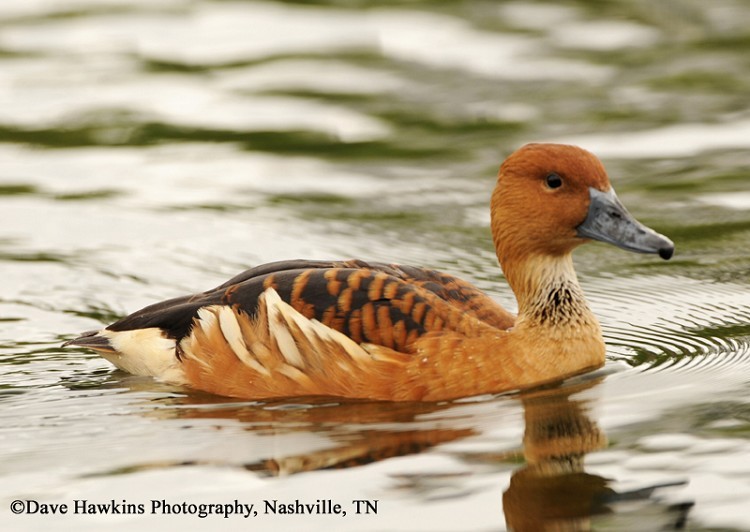Fulvous Whistling-Duck, Dendrocygna bicolor
The distinctive-looking Fulvous Whistling-Duck is a rare visitor in Tennessee but is one of the most widely distributed species of waterfowl in the world! In the Americans it breeds from northern Argentina to southern California, along the Gulf Coast, locally in Florida, and in parts of the Caribbean. It is also found on the Hawaiian Island of O‘ahu, and in East Africa, Madagascar, India, Sri Lanka, and Burma.
Description: The Fulvous Whistling-Duck is a medium-sized dabbling duck with a long neck, long gray legs, a buffy cinnamon-brown head, neck and belly, and a gray bill. The wings are all-dark in flight, and males and females look similar. Immature birds look like adults.
Length: 19"
Wingspan: 29"
Weight: 1-1.5 lbs.
Similar Species: The Black-bellied Whistling-Duck is similar in body shape but has a black belly, pink legs, a red bill, and a distinctive white wing-patch in flight.
Habitat: Freshwater wetlands, flooded grasslands, rice fields, and pasture.
Diet: Seeds of water plants, rice, aquatic invertebrates.
Nesting and reproduction: No nest records in Tennessee.
Status in Tennessee: Rare bird year round in Tennessee.
Dynamic map of Fulvous Whistling-Duck eBird observations in Tennessee
Best place to see in Tennessee: Ensley Bottoms, aka the "Pits," in Memphis.
Fun Facts:
- Fulvous Whistling-Duck only started breeding in the United States in the early 1900's (first record was 1896, Merced Co., CA. They mostly breed in agricultural habitats, primarily rice fields.
- Unlike many other ducks which have elaborate courtship displays, whistling-ducks appear to have none.
Best place to see in Tennessee: Ensley Bottoms, aka the "Pits," in Memphis, Shelby Co.
